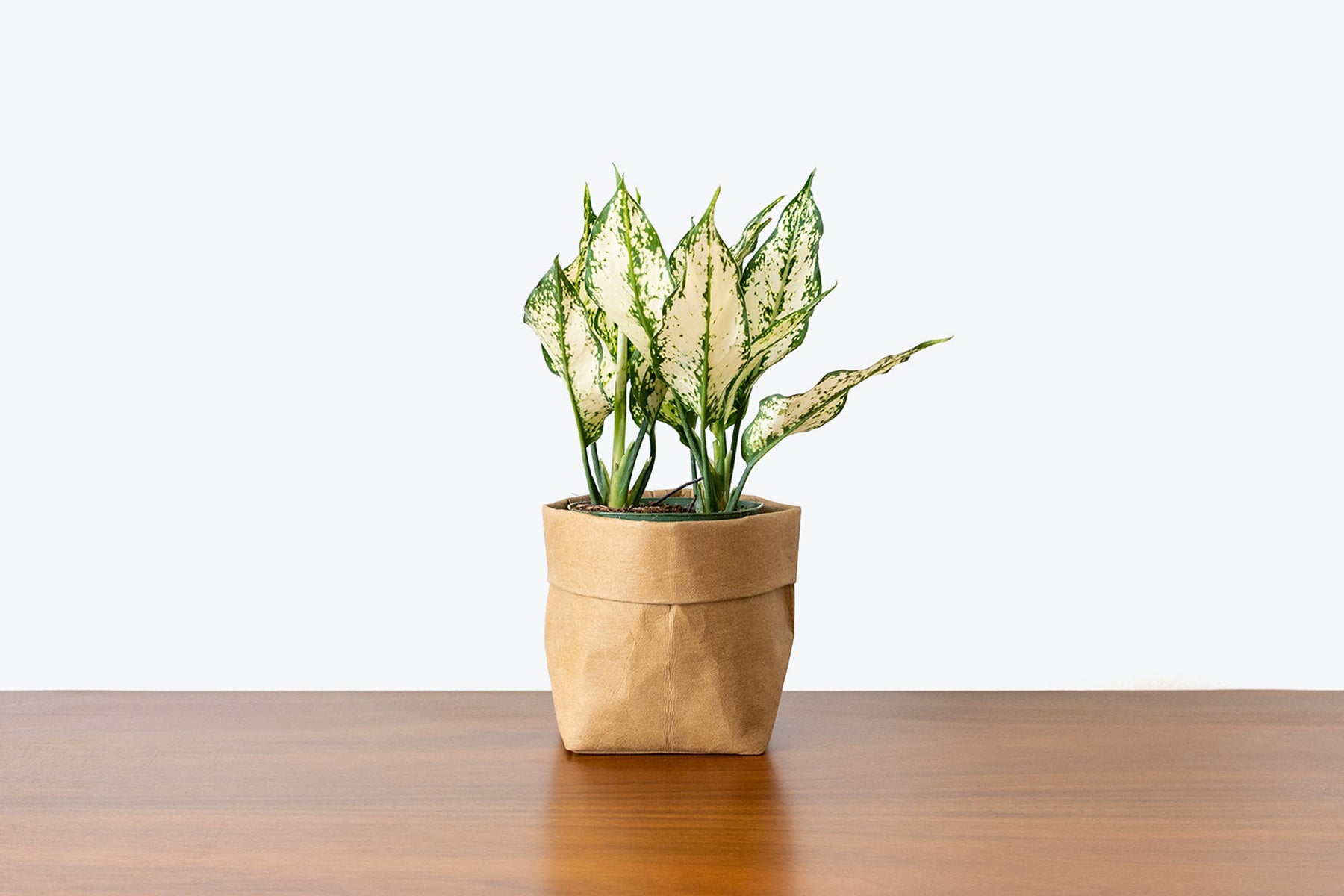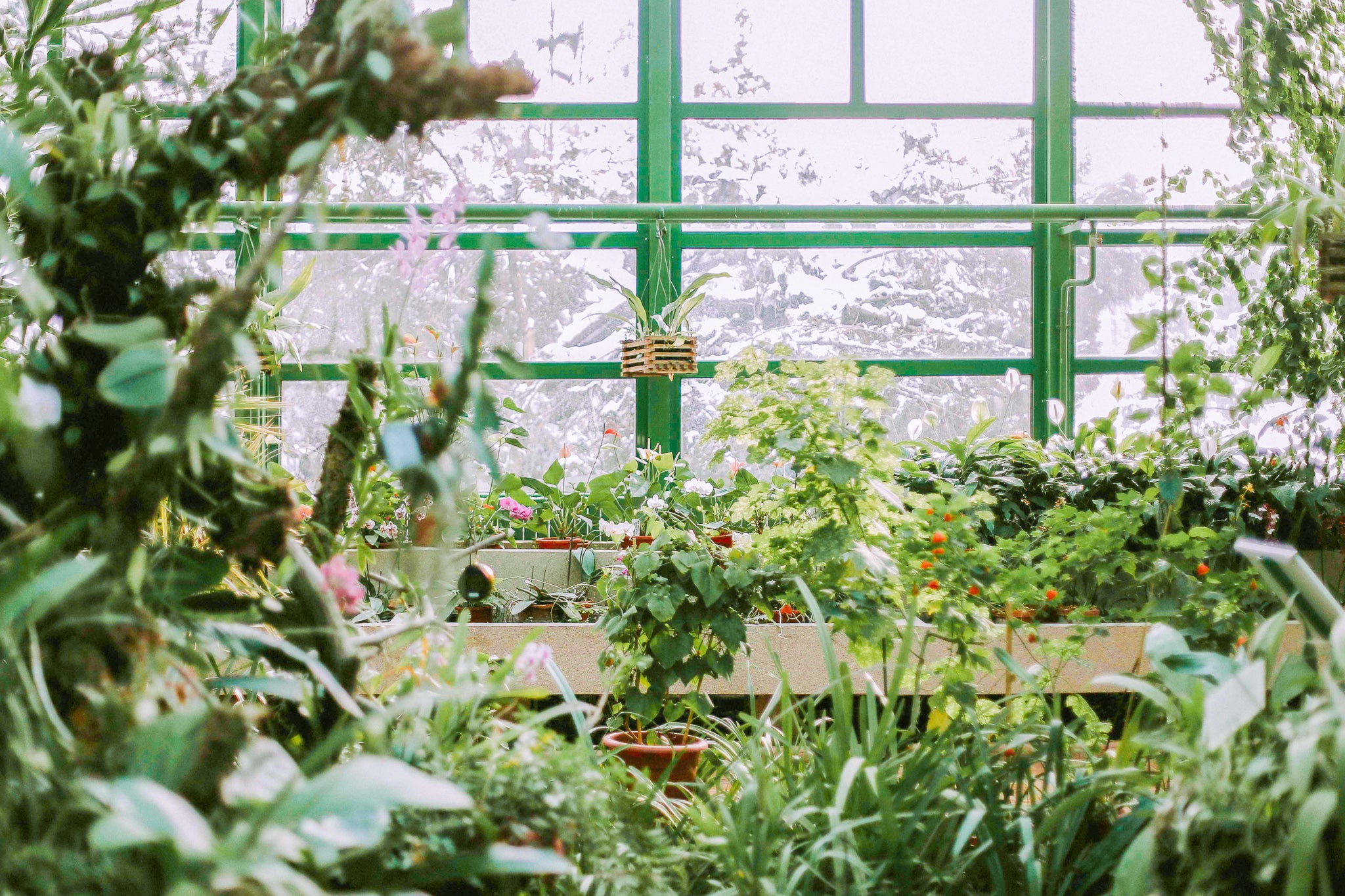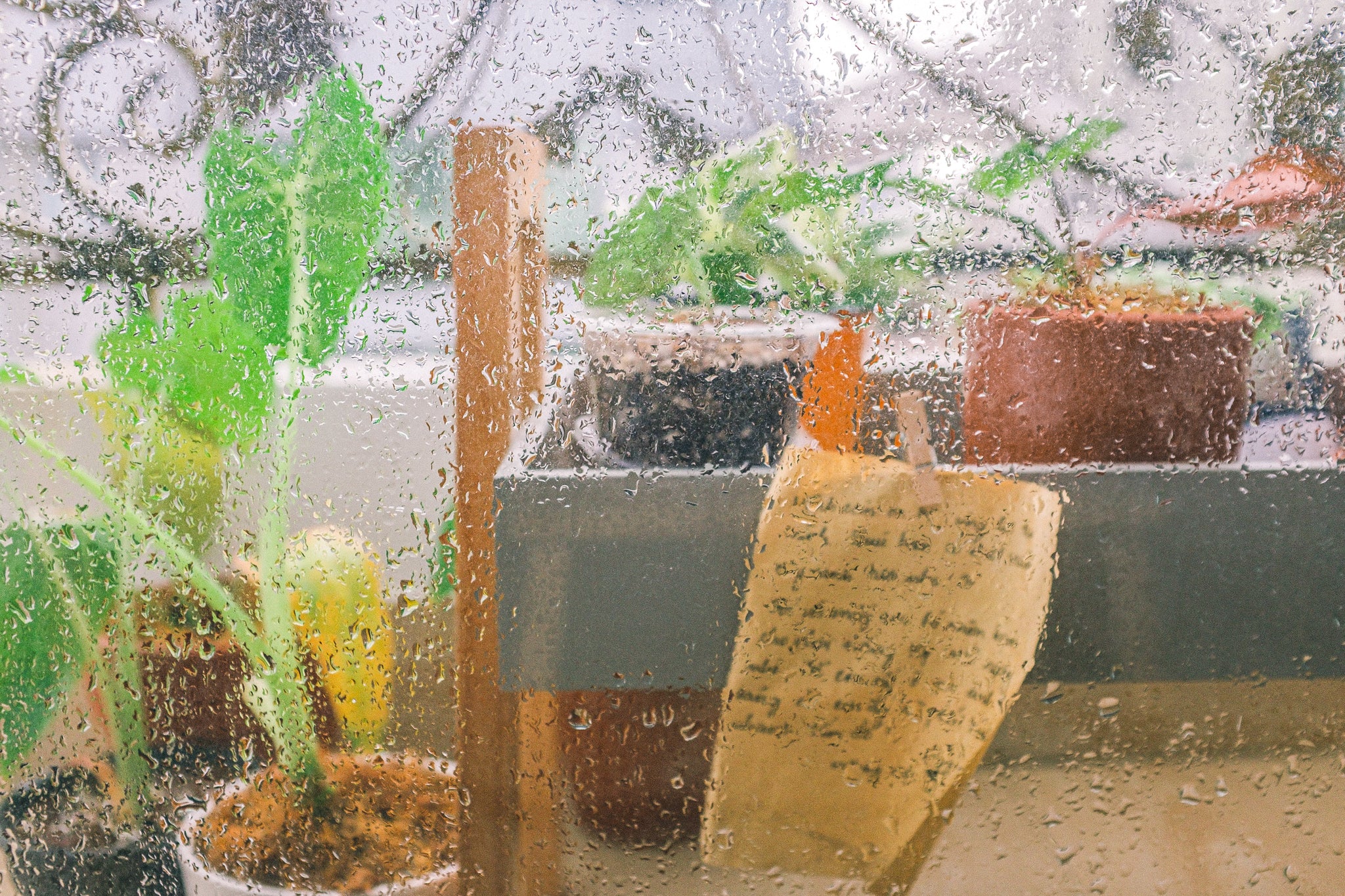
How to take care of your Chinese Evergreen (Aglaonema)
The Aglaonema, or Chinese Evergreen, is a great plant for beginner plant parents, boasting beautiful foliage in a variety of patterns as well as a relatively simple care routine. You may recognize them from the decor in malls, office spaces, or stores as they are very low maintenance once placed in an ideal location. Known as a popular plant that can handle lower light levels, these stunners can add colour to your plant collection with their unique patterns, coming in greens, reds, yellows, pinks and more.

If that isn’t enough to convince you, the shape of their leaves can be broad, thin, long or short, all you have to do is figure out what you prefer and there will be a fit for you! Even NASA wants you to get one of these babies, they are on the list of top air purifying plants after all. As long as you do not overwater your Aglaonema, as this is the most common way of killing these beauties, your plant should require very little maintenance. Find out how to care for your new plant below.
Light Requirements
A bonus with this houseplant, it’s a beginner’s dream as it can handle most light conditions! The lowest light conditions that this plant can handle include the following:
- Next to a North-facing window
- A few meters back from a South, West, or East facing window
- Next to a South, West, or East facing window that is facing a courtyard or is blocked by a nearby building
Many plants are sold saying that they thrive in low to high light, however, that is not necessarily the case. There are quite a few options for plants that can be placed in lower light spaces, but they won’t thrive. They will become what people call “leggy”, meaning their growth is more stretched out and the leaves may grow thinner as they adjust to these lower light levels. If this is something you don’t necessarily care about, your Aglaonema will be just fine if it is slightly less compact and dense, just watch you don’t overwater it!
However, if this is something you do care about, here are some ideal light conditions for you to keep your plant looking lush and full:
- Next to, or close by, a South, Southwest, or West-facing window that has sheer curtains for some bright, indirect light (keep in mind, they cannot handle full sun so the curtains keep the leaves from getting burned by the sun)
- About 5-10ft away from a South, Southwest, or West-facing window without curtains
- Next to a North or East-facing window
The more colour, or variegation, your Chinese Evergreen has, the more light it needs, just as with any other plant! If your plant has lots of reds, pinks or whites in it, it’ll probably need brighter light to keep those colours rich and vibrant compared to a variety that is different shades of green. It is also smart to rotate your plant, especially if only one side is facing the light source, this will allow for even growth on all sides.
Now, remember, this may change during the Winter months, as there is way less light than in the Spring/Summer months. The days are shorter and the sun hides its beautiful, warm face way too much for a plant's liking. When these days arrive, you may have to move your plant closer to its light source or invest in grow lights to compensate, but check out more information on this in our “How to Care for Your Plants in the Winter” article.
Watering Requirements
In the Spring/Summer months, when you notice the top of the soil appears dry and the first couple inches of soil are dry to the touch, water the plant thoroughly with lukewarm water until it is coming out of the drainage holes, generally every 7-10 days. Aerate the soil beforehand so that water reaches the whole root ball. Do not let it sit in water though as that can produce root rot, so if the plant is in a decorative pot, ensure all the runoff is dumped out. Aglaonemas are prone to overwatering issues so make sure you keep the soil evenly moist but not wet and soggy.
In the Winter months, you can ease up on watering as plants tend to go dormant in our cold weather, about every 2 weeks when the majority of the soil is dry. Wipe or dust off the leaves more often in winter as well because that is the optimal time for pests to set up shop.
Plant Tip: If you are noticing that the water is running right through the pot rather than absorbing in the soil, try watering from the bottom of the plant by setting it in a bowl of water for roughly 30 minutes!
One thing to always remember: the more light your plant is getting, the more water it will need, and vice versa. If your plant is in a spot that receives very bright light, it will need more water than the Aglaonema placed in what I described as a lower light spot above. Keep that in mind when watering your plant and adjust as needed!
Showering your plant off every other week is also a good idea, whether with the hose outside or in your shower, as this not only waters the plant but also washes off any dust and potential pests. Avoid letting water sit on the leaves for too long, however, as this can cause rotting spots from excess moisture. Just make sure to coincide this showering off with your regular watering schedule so as not to overwater your plant.
Humidity
Aglaonema can handle all environments but most plants will often prefer humid environments, so if you have the time, and want to make the effort, you can:
- Place the nursery pot on top of a bed of rocks that are covered in water, which increases the humidity in the air directly around the plant
- Place a glass of water next to the plant, that also does something similar
- Mist all the leaves daily in the summer and weekly in the Winter
- If you feel like splurging, invest in a humidifier to increase the humidity in the room the plant resides in
Without this added humidity, you may notice some browning at the tips of the leaves but this is natural and nothing is wrong with your plant, as long as it is not a pest or watering problem. Also, ensure your plant is nowhere near a draft, most tropical plants don’t like them, so keep your plant away from any vents or windows (especially when the weather is cold).
Fertilizing
Thankfully, Aglaonemas are not too picky when it comes to fertilizer, and they really don’t need it that often. Fertilize once a month through the Spring and Summer months and then do not fertilize throughout the Winter, unless they seem to be actively growing. Just use a generic house plant fertilizer that any greenhouse, garden centre, or plant shop offers!
Toxicity
Aglaonema contains calcium oxalate crystals, which are toxic if ingested by either human or animal, including symptoms such as struggling to swallow, irritation, or vomiting. These crystals and the juice from the plant also causes irritation to our skin, including contact dermatitis or pain where it has touched the skin. Therefore it is best to use gloves and clippers when it is necessary to clean or trim the leaves of your plant, avoiding getting any of the sap on your skin!
Common Pests & Problems
Chinese Evergreens are generally unbothered by pests and problems but here are some common problems you could run into if you don’t properly care for your plant:
Overwatering:
Are the stems and leaves yellowing and mushy? Are you trimming off dead, yellow leaves very often? If so, you most likely have an overwatering issue and should remove the soil, trim any rotted roots off, and repot your plant into fresh, dry soil, making sure to only water when the top couple inches of soil are dry.
Tips of Leaves Browning:
This is typically due to chemicals in the tap water we use to water our plants, if that is the case, use distilled water, rainwater, or let tap water sit out for a day or so to let the more harmful chemicals evaporate out. Sometimes it could be due to a lack of humidity as well and in that case, follow what I mentioned above for increasing the humidity.
Spider Mites:
You will often see a sticky residue on the undersides of the leaves and tiny webbing all along the leaves. Wash the plant off and allow the leaves and stems to dry off, then treat the entire plant (stems included!) with a neem oil mix or a spider mite spray you can get from your local garden centre or plant shop.
Scale:
If you notice a sticky, honeydew-like sap on the bottoms of leaves and brown “lumps” along the stems, you may be experiencing scale. Their damage includes yellowing and dropping of leaves (not just the oldest leaves) and very little new growth. They can be treated with any insecticidal soap, just make sure you treat your plant consistently for a few weeks to eliminate them.
With all that being said, Chinese Evergreens are a great plant to have in your home, they purify the air you breathe and are a breeze to take care of, as long as you follow the guidelines above!






